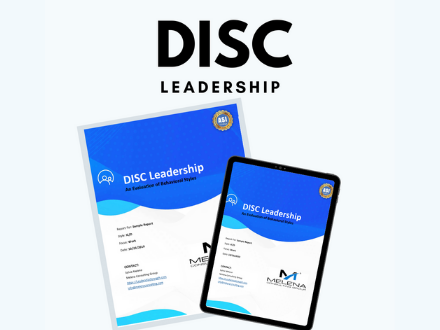Our leadership communication strengths have both peaks and valleys.
PEAKS are when our strengths contribute to building a great workplace where people feel valued and perform at their peak.
VALLEYS are when our strengths pose challenges and are detrimental to the workplace and performance. Our valleys hinder employee engagement and performance.
What Peaks and Valleys Look Like
Here’s an example of leadership communication peaks and valleys based on my actual DISC Leadership Report.
My DISC Leadership Communication Style is High D, or high Dominance.
The “General Characteristics” description of my DISC Leadership Report says:
Your quick thinking, your people skills, and your sense of urgency, all combine to create your spontaneous nature on the job. This can be an enormous value to the team. – DISC Report
Now let’s focus on the following three strengths from this excerpt:
- Quick Thinking
- Decisiveness, and
- Sense of Urgency.
These three strengths scream “action-oriented,” and they describe me with impeccable accuracy. I get things done. That’s the High D in me.
Now here are the peaks and valleys for my strengths.
On the peak side, I can lead the team into making things happen. We’ll execute, and because of that, we’ll get results.
On the valley side of things, I can be impulsive, make rash decisions, and stress out the team with my extreme action and sense of urgency.
Just like I have valleys to manage, you do too. But don’t worry. You can mitigate them.
5 Ways to Mitigate Your Valleys
1. Develop Self-Awareness
The first step in elevating your leadership communication is to gain a keen awareness of your strengths, and how they can either be tremendous assets or tremendous liabilities in the workplace.

The DISC Leadership Assessment is a research-validated tool that helps you identify your leadership communication style and its strengths. It also reveals your peaks and valleys.
The assessment generates a robust 54-page report that provides insights on how you can manage your leadership approach.
Reflecting on these can help you manage your valleys.
2. Gain Perspective
In addition to self-reflecting, find out how other people perceive you. In their world, perception is reality.
Getting other people’s perspective can give you a reality check.
In my earlier career, I acted as if everything were urgent, and I unintentionally stressed a lot of people.
Fortunately, team members were courageous and kind enough to share their perspective, and I learned to soften the edges.
As I developed in my leadership role, I also learned that everything truly isn’t urgent, even though this truth is contrary to my natural wiring and inclinations.
3. Understand Employee’s DISC Styles
Getting clear on your DISC leadership style is only half of the equation. Discovering your team members’ DISC styles is the other half.
When you know what makes other people tick, it demystifies their behavior. This allows you to adapt your approach to strengthen your supervisor-employee relationships.
4. Seek the Right Kind of Balance
To offset your valleys, seek the right kind of balance. This type of balance comes from forging partnerships.
You can build your balance by partnering with complementary DISC styles.
As a High D, I learned the value of working with people who are naturally wired to be more deliberative, such as people strong in the Conscientious style.
I need the thoughtful and analytical C people to keep me from diving off a cliff without first assessing if it’s safe to jump. But C’s need me too because I can keep them from getting stuck in overanalyzing the jump. We complement each other.
I also learned that I couldn’t neglect the other styles. They’re all equally valuable and contribute to a well-rounded and high-performing team.
5. Adapt Your Approach to Other People’s DISC Styles
When people with different DISC styles develop mutual understanding and adapt to each other’s styles, they foster trust, which leads to more rewarding and productive relationships.
And yes, DISC style differences between people can be a major source of conflict in the workplace. But these differences can also be a source of harmony when they’re viewed as complementary rather than opposing.
But this viewpoint only happens through awareness and intentionality in how we approach one another.
When we intentionally choose to acknowledge and honor our communication style differences, we elevate teamwork, eliminate disharmony, and create amazing workplaces conducive to peak performance.
Sylvia melena
About Sylvia Melena

SYLVIA MELENA is the Founder and CEO of Melena Consulting Group, a leadership and management consulting and training company. She is also the award-winning author of Supportive Accountability: How to Inspire People and Improve Performance.





